This article needs additional citations for verification. (August 2009) (Learn how and when to remove this template message) |
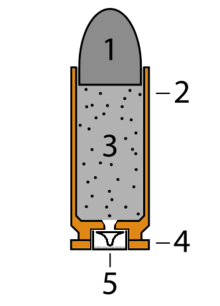
1. the bullet, as the projectile;
2. the metallic case, which holds all parts together;
3. the propellant, for example gunpowder or cordite;
4. the rim, which provides the extractor on the firearm a place to grip the case to remove it from the chamber once fired;
5. the primer, which ignites the propellant.
 Play media
Play mediaA bullet is a kinetic projectile and the component of firearm ammunition that is expelled from the gun barrel during shooting. The term is from Middle French and originated as the diminutive of the word boulle (boullet), which means "small ball". Bullets are made of a variety of materials such as copper, lead, steel, polymer, rubber and even wax. They are available either singly as in muzzleloading and cap and ball firearms or as a component of paper cartridges, but much more commonly in the form of metallic cartridges. Bullets are made in a large number of shapes and constructions depending on the intended applications, including specialized functions such as hunting, target shooting, training and combat.
Though the word "bullet" is often used incorrectly in colloquial language to refer to a cartridge round, a bullet is not a cartridge but rather a component of one. A round of ammunition cartridge is a combination package of the bullet (which is the projectile), the case (which holds everything together), the propellant (which provide majority of the energy to launch the projectile) and the primer (which ignites the propellant). This use of the term "bullet" when intending to describe a cartridge often leads to confusion when the components of a cartridge are specifically referred to.
Bullet sizes are expressed by their weights and diameters (referred to as "calibers") in both imperial and metric measurement systems. For example: 55 grain .223 caliber bullets are of the same weight and caliber as 3.56 gram 5.56mm caliber bullets.
The bullets used in many cartridges are fired at muzzle velocities faster than the speed of sound — about 343 metres per second (1,130 ft/s) in dry air at 20 °C (68 °F) — and thus can travel a substantial distance to a target before a nearby observer hears the sound of the shot. The sound of gunfire (i.e. the muzzle report) is often accompanied with a loud bullwhip-like crack as the supersonic bullet pierces through the air creating a sonic boom. Bullet speeds at various stages of flight depend on intrinsic factors such as its sectional density, aerodynamic profile and ballistic coefficient, and extrinsic factors such as barometric pressure, humidity, air temperature and wind speed. Subsonic cartridges fire bullets slower than the speed of sound so there is no sonic boom. This means that a subsonic cartridge, such as .45 ACP, can be substantially quieter than a supersonic cartridge such as the .223 Remington, even without the use of a suppressor.
Bullets do not normally contain explosives, but damage the intended target by transferring kinetic energy upon impact and penetration (see terminal ballistics).
Contents
History
The first use of gunpowder in Europe was recorded in 1247. It had been used in China for hundreds of years. The cannon appeared in 1327. Later in 1364, the hand cannon appeared. Early projectiles were made of stone. Stone was used in cannon and hand cannon. In cannon it was eventually found that stone would not penetrate stone fortifications which gave rise to the use of heavier metals for the round projectiles. Hand cannon projectiles developed in a similar fashion following the failure of stone from siege cannon. The first recorded instance of a metal ball from a hand cannon penetrating armor occurred in 1425. In this photograph of shot retrieved from the wreck of the Mary Rose which was sunk in 1545 and raised in 1982. The round shot are clearly of different sizes and some are stone while others are cast iron.
The development of the hand culverin and matchlock arquebus brought about the use of cast lead balls as projectiles. "Bullet" is derived from the French word boulette, which roughly means "little ball". The original round musket ball was smaller than the bore of the barrel. It was loaded into the barrel wrapped in a loose fitting cotton patch that held the bullet firmly in the barrel and against the powder. (Bullets not firmly on the powder risked exploding the barrel, with the condition known as a "short start".)
The loading of muskets was, therefore, easy with the old smooth-bore Brown Bess and similar military muskets. The original muzzle-loading rifle, however, with a more closely fitting ball to take the rifling grooves, was more difficult to load, particularly when the bore of the barrel was fouled from previous firings. For this reason, early rifles were not generally used for military purposes.
The first half of the nineteenth century saw a distinct change in the shape and function of the bullet. In 1826, Henri-Gustave Delvigne, a French infantry officer, invented a breech with abrupt shoulders on which a spherical bullet was rammed down until it caught the rifling grooves. Delvigne's method, however, deformed the bullet and was inaccurate.
Square bullets have origins that almost pre-date civilization and were used by slingers in slings. They were typically made out of copper or lead. The most notable use of square bullet designs was done by, James Puckle and Kyle Tunis who patented them, where they were briefly used in one version of the Puckle gun. The early use of these in the black-powder era was soon discontinued due to irregular and unpredictable flight patterns.
Pointed bullets
Delvigne continued to develop bullet design and by 1830 had started to develop cylindro-conical bullets. His bullet designs were improved by Francois Tamisier with the addition of "ball grooves" which are known as "cannelures", these moved the resistance of air behind the center of gravity of the bullet.
Tamisier also developed progressive rifling. The rifle grooves were deeper toward the breech, becoming shallower as they progressed toward the muzzle. This causes the bullet to be progressively molded into the grooves which increased range and accuracy.
The Thouvenin rifle barrel had a forcing plug in the breech of the barrel to mold the bullet into the rifling with the use of a special ramrod. While successful in increasing accuracy it was extremely hard to clean. These improvements were the basis for the development of the Minié Ball.
Among the first pointed or "conical" bullets were those designed by Captain John Norton of the British Army in 1832. Norton's bullet had a hollow base made of lotus pith that, on firing, expanded under pressure to engage with a barrel's rifling. The British Board of Ordnance rejected it because spherical bullets had been in use for the previous 300 years.
Renowned English gunsmith William Greener invented the Greener bullet in 1836. Greener fitted the hollow base of an oval bullet with a wooden plug that more reliably forced the base of the bullet to expand and catch the rifling. Tests proved that Greener's bullet was extremely effective, but the military rejected it too because, being two parts, they judged it as too complicated to produce.
The soft lead Minié ball was first introduced in 1847 by Claude-Étienne Minié, a captain in the French Army. It was another improvement of the work done by Delvigne. As designed by Minié, the bullet was conical in shape with a hollow cavity in the rear, which was fitted with a small iron cap instead of a wooden plug. When fired, the iron cap would force itself into the hollow cavity at the rear of the bullet, thus expanding the sides of the bullet to grip and engage the rifling. In 1855, the British adopted the Minié ball for their Enfield rifles. In 1855 James Burton, a machinist at the US Armory at Harper's Ferry, West Virginia improved the Minié Ball further by eliminating the metal cup in the bottom of the bullet. The Minié ball first saw widespread use in the American Civil War. Roughly 90% of the battlefield casualties in this war were caused by Minié balls fired from rifled muskets.
A similar bullet called the Nessler ball was also developed for smoothbore muskets.[26]
Between 1854 and 1857, Sir Joseph Whitworth conducted a long series of rifle experiments, and proved, among other points, the advantages of a smaller bore and, in particular, of an elongated bullet. The Whitworth bullet was made to fit the grooves of the rifle mechanically. The Whitworth rifle was never adopted by the government, although it was used extensively for match purposes and target practice between 1857 and 1866, when it was gradually superseded by Metford's.

Request Movie Now
Watch movie Bullet online on Amazon
Watch movie Bullet online
Watch The Movie On PrimeAlag Alag Full HD Movie Download
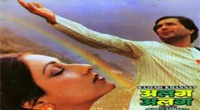
Narsimha Full HD Movie Download

Oye Lucky! Lucky Oye! Full HD Movie Download

Khoon Khoon Full HD Movie Download

Pyar Ka Sapna Full HD Movie Download
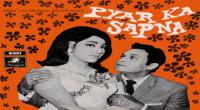
Sadak Chhap Full HD Movie Download
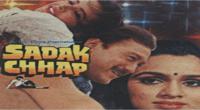
Mera Ghar Mere Bachche (1985) Full HD Movie Download
.jpg)
Garam Bazaar-Alias Miss Bharti Full HD Movie Download
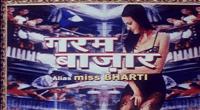
Romeo Full HD Movie Download
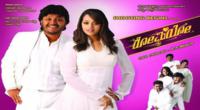
Carnival Full HD Movie Download

Indrajeet Full HD Movie Download

Something To Sing About Full HD Movie Download
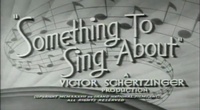
Level Cross Full HD Movie Download
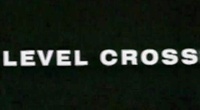
Aatma Gowaravam Full HD Movie Download
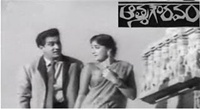
The Notebook Full HD Movie Download

Jigar Baaz Full HD Movie Download
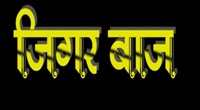
Alladin And The Magic Lamp Full HD Movie Download

Dharmam Thalai Kaakkum Full HD Movie Download
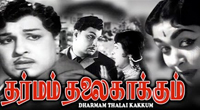
Enga Mama Full HD Movie Download
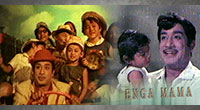
Iddaru Mitrulu Full HD Movie Download
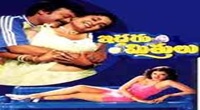
Kula Gothralu Full HD Movie Download
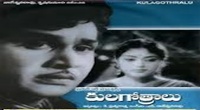
Download latest Movie from bollywood
- 1> baaghi 3
- 2> THE SKY IS PINK MOVIE FULL STORY AND REVIEW
- 3> Luka Chuppi
- 4> TO ALL THE BOYS I’VE LOVED BEFORE
- 5> Kabir Singh
- 6> Street Dancer 3D
- 7> Simmba
- 8> Gone Girl
- 9> The Girl Who Lived
- 10> Ludo
- 11> DILWALE DULHANIA LE JAYENGE
- 12> GUILTY
- 13> The Godfather
- 14> Adventures of Rusty
- 15> Sooryavanshi
- 16> Satyameva Jayate 2
- 17> Thappad
- 18> Bhool Bhulaiyaa 2
- 19> KGFChapter 2
- 20> Mardaani 2
- 21> Pinjar
- 22> Shivaji maharaj
- 23> Ek Villian 2
- 24> Hungama 2
- 25> Divergent
- 26> Mumbai Saga
- 27> The Internship
- 28> HIT (telugu)
- 29> Panga
- 30> The perfect date
- 31> 16 December
- 32> Gopala Gopala (Telugu)
- 33> Brahmastra
- 34> Gangubai Kathiawadi
- 35> Manmadhudu
- 36> Nenu local
- 37> Mahanati
- 38> Shatamanam bavathi
- 39> Lagaan
- 40> After
- 41> MOM
- 42> Shamshera
- 43> Raguvaran BTech
- 44> Khakee
- 45> The villain
- 46> OM
- 47> Mr. perfect
- 48> Bueatifull mind
- 49> Hichki
- 50> Gabbar Singh
- 51> Jogi
- 52> Before Sunrise
- 53> Before Sunset
- 54> Before Midnight
- 55> The Big Bull
- 56> Top Gun: Maverick
- 57> The Purge
- 58> The Sky is Pink
- 59> Laxmmi Bomb
- 60> Sadak 2
- 61> Sufna
- 62> Prithviraj
- 63> PK
- 64> Coolie No 1(2020)
- 65> Black Widow
- 66> Dear Zindagi
- 67> Dil Bechara
- 68> PHIR HERA PHERI
- 69> WAR
- 70> Dostana
- 71> RRR: Roudram Ranam Rudhiram
- 72> Maidan
- 73> Dabbang 3
- 74> Chhalaang
- 75> life as we know it
- 76> SherShaah
- 77> Sandeep Aur Pinky Faraar
- 78> Event Horizon
- 79> 83
- 80> Radhe: Your Most Wanted Bhai
- 81> Gunjan Saxena: The Kargil Girl
- 82> Mr India
- 83> Vivah
- 84> Anokha Bandhan
- 85> Ghost
- 86> Bhoot: Part One - The Haunted Ship
- 87> Haseen Dilruba
- 88> Laal Singh Chaddha
- 89> Qismat
- 90> Rajput
- 91> Drive
- 92> Dil Chahta Hai
- 93> Dil Ki Baazi
- 94> Dil Ka Rishta
- 95> Teesri Manzil
- 96> Dil
- 97> Love Aaj Kal
- 98> Khaali Peeli
- 99> Bunty Aur Babli 2
- 100> Atrangi Re
- 101> Gulabo Sitabo
- 102> Jodi
- 103> Suraj Pe Mangal Bhari
- 104> Deewana
- 105> Attack
- 106> Sardar Udham Singh
- 107> Toofan
- 108> THE LOVEBIRDS
- 109> Jersey
- 110> Ginny Weds Sunny
- 111> Thalaivi
- 112> Shiddat
- 113> Angels vs Zombies
- 114> Koi Mil Gya
- 115> Thank God
- 116> Bhuj: The Pride of India
- 117> Hum Aapke Hain Kaun
- 118> The Platform
- 119> Bird Box
- 120> Roohi Afzana
- 121> Torbaaz
- 122> Nikamma
- 123> World War Z
- 124> Extraction
- 125> Train to Busan
- 126> Life of Pi
- 127> SHAADI MEIN JROOR AANA
- 128> Himmat Aur Mehnat
- 129> To All The Boys: P.S. I Still Love You
- 130> Mimi
- 131> Good Newwz
- 132> Shubh Mangal Zyada Saavdhan
- 133> Raabta
- 134> Harry Potter and the Philosopher's Stone
- 135> Harry Potter and the Chamber of Secrets
- 136> Chhapaak
- 137> War of the Worlds
- 138> Harry Potter and the Prisoner of Azkaban
- 139> Harry Potter and the Goblet of Fire
- 140> MURDER MYSTERY
- 141> Shakuntala Devi
- 142> Bachchan Pandey
- 143> Jayeshbhai Jordar
- 144> Sheer Qorma
- 145> Saina
- 146> 'O' Pushpa I hate tears
- 147> Kedarnath
- 148> MS Dhoni The Untold Story
- 149> Chhichhore
- 150> Badhaai Ho
- 151> Unstoppable
- 152> Oz the Great And Powerful
- 153> The Girl on the Train
- 154> Haathi Mere Saathi 2020
- 155> The Conjuring: The Devil Made Me Do It
- 156> Gandhi Se Pehle Gandhi
- 157> The Song of Scorpions
- 158> Srimanthudu
- 159> Hello Guru Prema Kosame
- 160> Beauty and The Beast
- 161> Black Panther
- 162> Charlie and the Chocolate Factory
- 163> Bole Chudiyan
- 164> Fidaa
- 165> Duvvada Jagannadham
- 166> Bruce Lee: The Fighter
- 167> Hyper
- 168> Yaara
- 169> Red (2020)
- 170> Shivam
- 171> That Is Mahalakshmi
- 172> Nishabdham
- 173> Aashram 2020 web series
- 174> Laxmii
- 175> Mismatched
- 176> STUDENT OF THE YEAR 2
- 177> NAIL POLISH
- 178> Ramprasad Ki Tehrvi
- 179> KAAGAZ
- 180> 12 o Clock
- 181> The Power
- 182> bolo hau
- 183> Tribhanga
- 184> JAMUN
- 185> Madam Chief Minister
- 186> Maasaab
- 187> Aadhaar
- 188> Tanhaji
- 189> Bhaagi 3
- 190> Bhootnath
- 191> MALANG
- 192> Jai Mummy Di
- 193> Haathi Mere Saathi 2021
- 194> Shakeela
- 195> Unpaused
- 196> Annayya
- 197> Vamsoddharakudu
- 198> Mrugaraju
- 199> Narasimha Naidu
- 200> Sankranti
- 201> Manasu Maata Vinadhu
- 202> Anjaane
- 203> Apaharan
- 204> Bachke Rehna Re Baba
- 205> Bewafaa
- 206> Roohi
- 207> Radhe
- 208> Zindagi Khoobsoorat Hai
- 209> Yeh Mohabbat Hai
- 210> Yeh Kya Ho Raha Hai?
- 211> The Tomorrow War
- 212> DehradunDiary
- 213> Meri Shaadi Karaoo
- 214> Matruu Ki Bijlee Ka Mandola
- 215> No One Killed Jesica
- 216> Aag Ka Goola
- 217> Eight Million Dollars
- 218> Three Hundred
- 219> Cats and Dog
- 220> Decoy
- 221> Gold Rush
- 222> You Have Got Mail
- 223> Final Destination three
- 224> Tofan
- 225> Jungle
Request for Download movie Bullet
- Bollywood movies
- Latest Bollywood movies
- Download all bengali movies
- Download all bhojpuri movies
- Download all english movies
- Download all gujarati movies
- Download all hindi movies
- Download all kannada movies
- Download all malayalam movies
- Download all marathi movies
- Download all oriya movies
- Download all punjabi movies
- Download all tamil movies
- Download all telugu movies
- Bollywood action movies
- Bollywood adventure movies
- Bollywood animation movies
- Bollywood classical movies
- Bollywood comedy movies
- Bollywood crime movies
- Bollywood devotional movies
- Bollywood documentary movies
- Bollywood drama movies
- Bollywood family movies
- Bollywood fantasy movies
- Bollywood historical movies
- Bollywood history movies
- Bollywood horror movies
- Bollywood musical movies
- Bollywood mystery movies
- Bollywood mythological movies
- Bollywood patriotic movies
- Bollywood romance movies
- Bollywood romantic movies
- Bollywood sci-fi movies
- Bollywood social movies
- Bollywood spiritual movies
- Bollywood sports movies
- Bollywood suspense movies
- Bollywood thriller movies
- Bollywood war movies
- Hot actress list
- Hot gujarati actress list
- Hot tamil actress list
- Hot bhojpuri actress list
- Hot assam actress list
- Hot bihari actress list
- Hot jammu and kashmir actress list
- Hot gujarati actress list
- Hot haryana actress list
- Hot konkani actress list
- Hot marathi actress list
- Hot odia actress list
- Hot punjabi actress list
- Hot rajasthani actress list
- Hot kannada actress list
- Hot malayalam actress list
- Hot telugu actress list
- Hot tulu actress list
- Hot Actress list from Indian city
- Hot actress list from ahmedabad
- Hot actress list from alappuzha
- Hot actress list from bangalore
- Hot actress list from bangalore
- Hot actress list from bhopal
- Hot actress list from chandigarh
- Hot actress list from chennai
- Hot actress list from guwahati
- Hot actress list from hyderabad, india
- Hot actress list from indore
- Hot actress list from jaipur
- Hot actress list from kannur
- Hot actress list from kochi
- Hot actress list from kolkata
- Hot actress list from kollam
- Hot actress list from kottayam
- Hot actress list from kozhikode
- Hot actress list from lucknow
- Hot actress list from madurai
- Hot actress list from mangalore
- Hot actress list from mumbai
- Hot actress list from mysore
- Hot actress list from new delhi
- Hot actress list from patna
- Hot actress list from pune
- Hot actress list from thiruvananthapuram
- Hot actress list from thrissur
- Hot actress list from tiruchirappalli
- Hot actress list from vijayawada
- Hot actress list from visakhapatnam
- All Bollywood Movies
- Bollywood Celeb
- >Art Director
- >Audiography
- >Background Music
- >Banner
- >Choreographer
- >Cinematographer
- >Costume Designer
- >Dialogue Writer
- >Director
- >Distributor
- >Editor
- >Executive Producer
- >Hair Stylist
- >Lyricist
- >Music Director
- >Photographer
- >Playback Singers
- >Presenter
- >Producer
- >Production Company
- >Production Designer
- >Screenplay
- >Singer
- >Sound
- >Actor
- >Story Writer
- >Studio
- >Video Director
- >Miscellaneous
- >Publicity (pro)
- >Web Creator
- >Production Labs
- >Publicity Design
- >Publicity Stills
- >Writer
- >Miscellaneous Artists
- >Visual Effects
- >Reporter
- >Music Company
- >Shooting Studios
- >Picturised On
- >Line Producer
- >Co Producer
- >Asst Director
- >Casting Director
- >Cinematography
- >Choreography
- >Dialouge
- >Editing
- >Lyrics
- >Music
- >Story
- >Playback Singer Female
- >Playback Singer Male
- >Actor In A Comic Role (male/female)
- >Child Artiste
- >Ensemble Cast
- >Actor Popular Choice (male)
- >Actor Popular Choice (female)
- >Sa Re Ga Ma Pa Song Of The Year
- >Actor In Supporting Role
- >Actress In Supporting Role
- >Actor In Leading Role
- >Art Direction
- >Actress In Leading Role
- >Sound Recording
- >Costume Design
- >Special Effects
- >Action
- >Actor In A Negative Role
- >Lifetime Achievement Award
- >Cinematic Exellence (director)
- >Cinematic Exellence (male)
- >Cinematic Exellence (female)
- >International Male Icon
- >International Female Icon
- >Actor In A Supporting Role (male)
- >Actor In A Supporting Role (female)
- >Actor In A Comic Role
- >Playback Singer (male)
- >Playback Singer (female)
- >Most Promising Debut (female)
- >Most Promising Debut (male)
- >Most Promising Director
- >Sound Design
- >Lifetime Jodi
- >Marketed Film
- >Jury Award For Best Actor
- >Jury Award For Best Actress
- >Jury Award For Best Film
- >Jury Award For Best Director
- >Playback Singer(male)
- >Lifetime Acheivement Award (male)
- >Excellence Award
- >Jodi Award
- >Performer Of The Year
- >Presented By